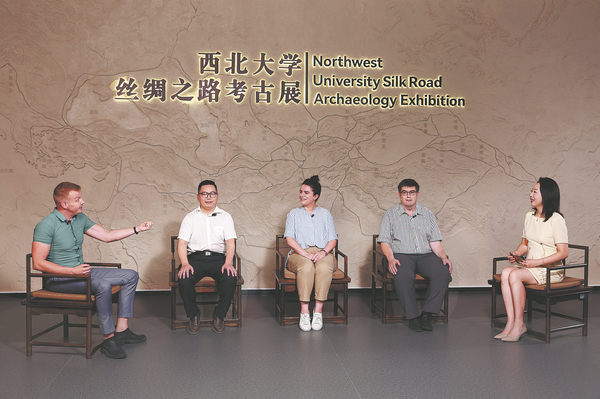

Watch it again: Embracing Cultures, 'Cultural legacy of the Silk Road'
A salon explores the legacies of the ancient trade routes that connected China with the West to discern what they mean for our world today and tomorrow, Erik Nilsson reports in Xi'an.
Italian archaeologist Marcella Festa surprised fellow participants of a recent salon about the Silk Road when asked to name the one artifact that she believes best epitomizes the trade route.
Her answer? Camels.
"It reminds us that the Silk Road is not made of objects. It's made of living beings," says the associate professor at the School of Cultural Heritage of Northwest University in Xi'an, Shaanxi province.
Indeed, these creatures have, perhaps as much as silk itself, become synonymous with the intercontinental transport network that flourished for millennia. They literally served as the vehicles for trade and exchange that shaped the routes and, ultimately, the world beyond.
"The Silk Road would not be possible without humans meeting each other, without animals carrying things. So, it's a good reminder for us to not just look at the objects, which are very beautiful and very significant in terms of history and artistic value, but also people — how people lived, why did they meet, how they met — because these are the aspects that actually built the Silk Road."
Festa joined two other academics from Northwest University: School of Foreign Languages associate professor Briton Robin Gilbank and Xi Huidong, deputy dean of the Institute of Silk Road Studies, as well as two moderators from China Daily.